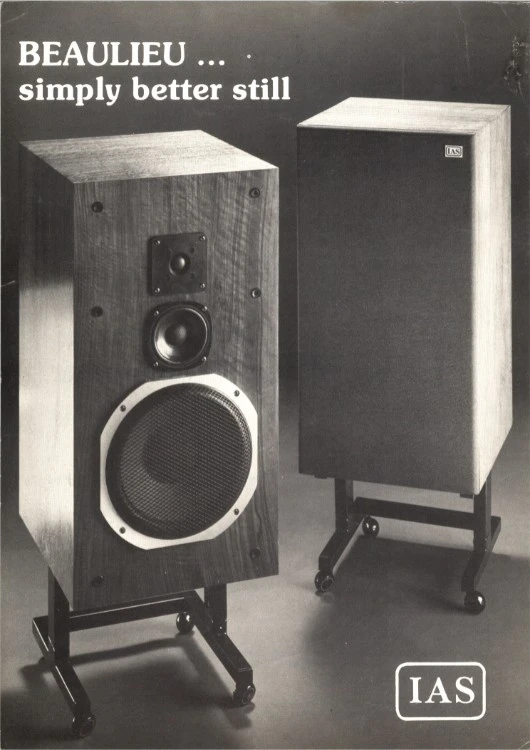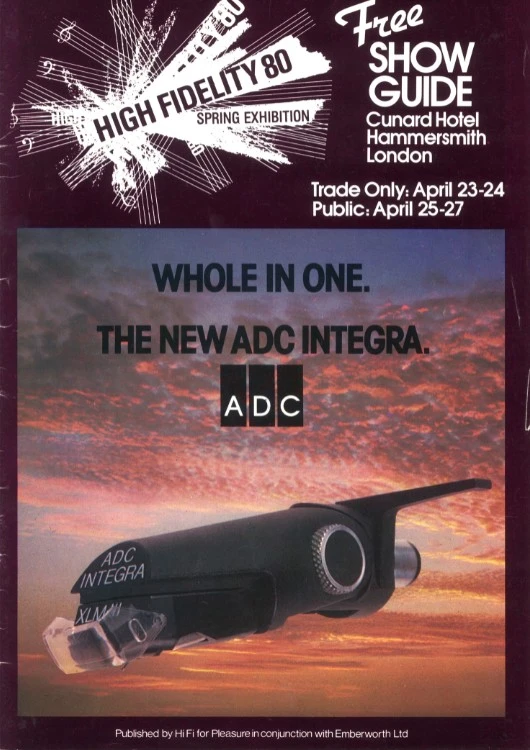Genesis and Revival
IAS and the original Beaulieu loudspeaker system

In 1980, the collaboration between two loudspeaker engineers, David Hall and Alan Willis, co-founders of Integrated Audio Systems (IAS) in Southampton, bore the labours of what was to be their most successful and arguably greatest achievement in acoustic transducer system design: the IAS Beaulieu hi-fi stereo loudspeaker system.
Theirs was a background formed out of the realisation that the sound reproduced by hi-fi loudspeaker systems on the market at that time, in their view, simply did not reproduce anything resembling real-life. In particular, the ability to assimilate actual musical instruments in both voicing and dynamic range. With successes already established in transmission-line and crossover circuit design to their credit from earlier projects, it was noted that manufacturers elsewhere had not yet managed to design full-range loudspeaker systems that could encompass full-bandwidth reproduction without recourse toward overly-large cabinet enclosures. Additionally, such systems often sounded sluggish, uncontrolled and imprecise in resolution compared to compact two-way designs that at least achieved speed and focus.
Thus, came into being the IAS Beaulieu loudspeaker system of 1980. With every aspect of cabinet, crossover and drive unit implementation scrutinised and explored through research and extensive testing, discounting common speaker design practices that had gone before wherever necessary when realising the negative impact such measures were responsible for, the cumulative changes, as applied in the Beaulieu project, gave rise to a product of exemplary sonic virtues hitherto unrealised.
Original Beaulieu performance
With a dynamic range envelope exceeding domestic loudspeaker systems with absolutely no hint of harshness, a deep, controlled bass extension of supreme speed and depth beyond every other system anywhere near the size, an open and revealing treble detail that conveys natural cymbal reproduction, piano registration, operatic female voice peaks and string-tone, seamless mid-band integration comparable to electrostatic resolution with soundstage depth and transparency that informs a top-to-bottom coherence with window-like clarity and precision: such collective achievements had never before been realised from any given passive loudspeaker system design of any size.
Original 1981 IAS Beaulieu Gramophone review and test by John Borwick B.Sc. APRS
The following review of the IAS Beaulieu in Gramophone, conducted in April 1981 by audio and technical editor and contributor John Borwick, outlined the design through subjective listening as well as with objective measurement of the system.
Review article reprinted by kind permission of Gramophone editor, Martin Cullingford MA.
John Borwick (1924-2016) may have had involvement within the hi-fi industry, but this was merely one aspect of an ever-widening remit of knowledge-base from a career that spanned many decades applying expertise: both scientific and mathematical as well as being involved with music through a lifetime spent studying, researching, broadcasting, lecturing and educating, plus writing and publishing such intensely complex subject matters in the field of sound.
A passionate academic who was held in high esteem, first working his way from the RAF to the BBC, working as studio and balance engineer and latterly as trainer, then onto lecturing at the University of Surrey before becoming involved within The Association of Professional Recording Studios and the Audio Engineering Society. His time with Gramophone magazine being well remembered by the hi-fi industry to this day as a much respected commentator on the given subject of appraising the standard of performance attained from what the industry had to offer.
From the above 1981 Gramophone review, these virtues, over forty years on, are still unassailable elsewhere unless looking at the very pinnacle of high-end loudspeaker design, but with a pre-dependence upon being driven by heavily-engineered, muscular amplification of significant means and cost, in order to realise these lofty goals.
Some loudspeakers in more recent times have taken a leaf from the pro-audio industry sector with digital-active designs entering into the domestic field: utilising equalisation and phase compensation techniques through digital signal processing (DSP) implementation that squeezes a more wideband-efficient sonic signature from loudspeaker enclosures that convey sound quality with better control and in-room balance than many passive loudspeaker designs. However, one cannot ignore the law of physics and there still exists a gap in the reality of reproduction from such precisely engineered products that lean heavily toward measured performance statistics.
While active systems using DSP seek to address certain needs in the digital age, there still remains valid scepticism toward what are seen as ‘solution’ products from detractors within the high-end hi-fi community who cite concerns of an auditory vein. This is a subject that continually divides opinion between pro-industry sound engineers and those inhabiting the high-end audio community. Whatever the arguments for or against from either side of the divide, the notion that a passive loudspeaker system can offer the highest standards of sound quality with bandwidth, dynamic range and a level in-room response without recourse toward DSP measures or active crossovers, as is the case with the IAS Beaulieu loudspeaker system, makes for a very convincing case favouring the non-active, non-DSP route.
It will however come as no surprise that David Hall and Alan Willis explored the active loudspeaker route with the Beaulieu at one point; realising and subsequently demonstrating a fully working model at one of the numerous hi-fi shows in which they exhibited at in the early 1980’s.
Legacy
The IAS Beaulieu loudspeaker system, for those fortunate enough to have owned, or still own an original early pair, (as designed by David Hall and the late Alan Willis), attest to never wanting to change from using this system; such is the incredible reach of what is revealed from a recording or a high-quality broadcast, and with a real ability to continually surprise, impress and startle. The only limitation being the recording, the system or a dismally poor room acoustic.
Time has been most kind to this iconic design from 1980, and it still amazes listeners upon first hearing this speaker system for the first time to this very day. It has therefore been felt, quite appropriately, that the IAS Beaulieu should be resurrected. Certainly by one enthusiast who remembers seeing this loudspeaker system upon its launch at the Hi-fi 80 exposition from West London’s Cunard Hotel in Hammersmith, then again while working at a specialist hi-fi dealer in Hadleigh, Essex in the summer of 1981. Said enthusiast being the author of this piece.
Owning numerous high-end loudspeaker systems across several decades, experimenting and improving wherever possible on designs that have included electrostatic, horn-loaded and reflex systems, the performance encountered has always been fairly predictable on each and every design after a period of ownership. Some loudspeakers being most satisfactory; enduring for well over a decade in an ever-changing and evolving system. Others, less so.

Following a prolonged period of wishing to secure a pair of IAS Beaulieu loudspeakers, a one-owner pair became available and these were duly purchased out of curiosity to hear what they were capable of almost forty years after the last encounter back in 1981. The IAS Beaulieu was by now a relatively old product, but the distant memory of its glorious sound was such that it became a venture more than worth pursuing.
Reassessing the original
Very rarely does a piece of equipment reach out and inform an experienced listener to such a degree as to completely confound and rewrite the rules of auditory perception with what is actually being heard by the way a sound is conveyed through significantly advanced levels of reproduction, and in multiple ways too. One by one, and over time, with the newly acquired second-hand pair of original IAS Beaulieu loudspeakers from 1980 duly installed into the hi-fi system, the listening proved thus:
First impressions give rise toward an initial assumption that there are forms of auditory trickery at play; so far removed is the performance from all prior listening sessions. Maybe a tailored response, yet nothing appears emphasised. The sheer intelligibility of vocals and lyrics: possibly something to do with an unevenness of balance, yet listening to numerous recordings reveal no evidence of such. Then, the combination of articulate and expressively fast bass that can reach right down to the very lowest fundamentals of electronic music productions or with organ pedal stops on vast cathedral instruments without a trace of unwanted upper-bass harmonic room bloom: bass emphasis with a presence suck-out possibly? Not a hint of it.
Time and again, this system surprises at every turn. Not once does it reveal a footprint that betrays the numerous recordings played. Quite the opposite. The 1980 IAS Beaulieu loudspeaker has the knack of revealing more layers to recordings than any other loudspeaker system owned or encountered to date, informing a level of integrity, transparency and speed with the most fantastic bass extension that is so rarely achieved, no matter what the size of loudspeaker cabinet enclosure.
In short, the criteria of collective measures, (several of these quite unique), as applied by David Hall and Alan Willis to the original Beaulieu loudspeaker system design owe more to musical instrument principles than are found elsewhere. This includes the materials used and their deployment in layout, including compliances, the choice of specific drivers for achieving better integration and the efficient minimalist circuit topologies deployed that eschew the burdensome practices of overly complex crossover networks which collectively distance, and to a considerable degree, veil and compress the ability of any loudspeaker system from ever sounding real or lifelike in presentation.
With such elemental principles, the original IAS Beaulieu loudspeaker system still leads the field to this very day, for no other system in size nor class approaches this standard, and from a design that is now well over forty years old. Quite an achievement and certainly one that was well ahead of its time. A design that consistently outperformed more widely acknowledged and revered loudspeaker designs of note, including milestone products that are still considered great achievements in the halls of hi-fi fame to this very day.
Re-evaluating the design
That the 1980 IAS Beaulieu can achieve all of this, and with relatively standard quality crossover semiconductors and standardised cabinet construction methods has begged the question as to whether this design could actually be brought forward and moreover, improved if key aspects informing the original design concept could still be sourced? The various manufacturers behind the Beaulieu loudspeaker system’s drive unit complement are still in evidence, including Volt of England and SEAS from Norway. Peerless, by now being within a controlling group that owns several noteworthy speaker manufacturing concerns, though with production now largely based in China, they are no longer precision engineered in Denmark.
Such an ambitious project rarely gets beyond the experimental stage. Four years of testing high-end boutique components, wiring quality, connection methods, hi-fi system and interconnect/cable screening and mains filtering from EMI/RFI noise pick-up (EMC regs) and their collective influence on the sound quality reproduced, have informed just some of the aspects of the new design through carefully reverse-engineering the original 1980 example of the IAS Beaulieu loudspeaker system. This has included a whole plethora of extensive research through consultation with time-honoured colleagues and friends within the hi-fi industry.
Listening, measuring and testing numerous treble units followed. Then exploring advanced cabinet structural practices in consultation with a leading professional cabinet maker took place and the influences of mild but critical panel damping with externalised vibration control further established the positive results sought. Last but by no means least, the product aesthetic considerations for bringing the Beaulieu loudspeaker system up-to-date and in-line with advanced and contemporary/modern interior design practices as well as factoring a ‘desirability of ownership’ through artistic merit using quality materials with considered opinions sought on same from noted artists and design professionals, have all been brought into being from dozens of schematic drawings and revisions being drafted.
Much assistance has been given from the aforementioned loudspeaker manufacturers, and in particular, Volt, who under special agreement have reimagined the original specification, lower compliance, first-generation bass/mid drive unit: unique and exclusively manufactured and supplied for the IAS Beaulieu 40R loudspeaker system project.
This new product is now fully realised and successfully built and tested in 2023.
